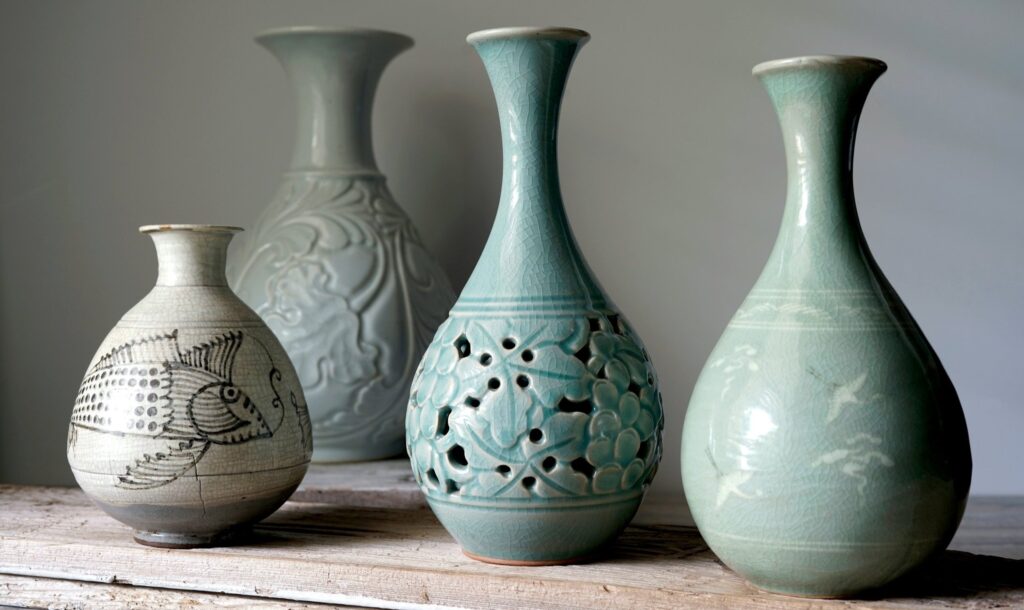
The yuhuchun vase 玉壺春瓶, also known as the pear-shaped vase, is a classic Chinese ceramic form that has been produced for centuries. It is characterized by its rounded body, long slender neck, and flared rim. The name yuhuchunping literally means “jade bottle spring,” and it is said to have been inspired by the shape of a spring of jade-like water.
Origins in China
The yuhuchunping vase is thought to have originated in the Tang dynasty (618-907 AD). It was initially used as a holy water vase in temples, but it later became popular as a wine vessel and decorative object. During the Song dynasty (960-1279 AD), the yuhuchunping vase became one of the most popular ceramic forms in China. It was produced in a variety of materials, including porcelain, stoneware, and celadon.
Below, an exquisite yuhuchunping from the Song Dynasty, a period known for excellence and elegance in form.
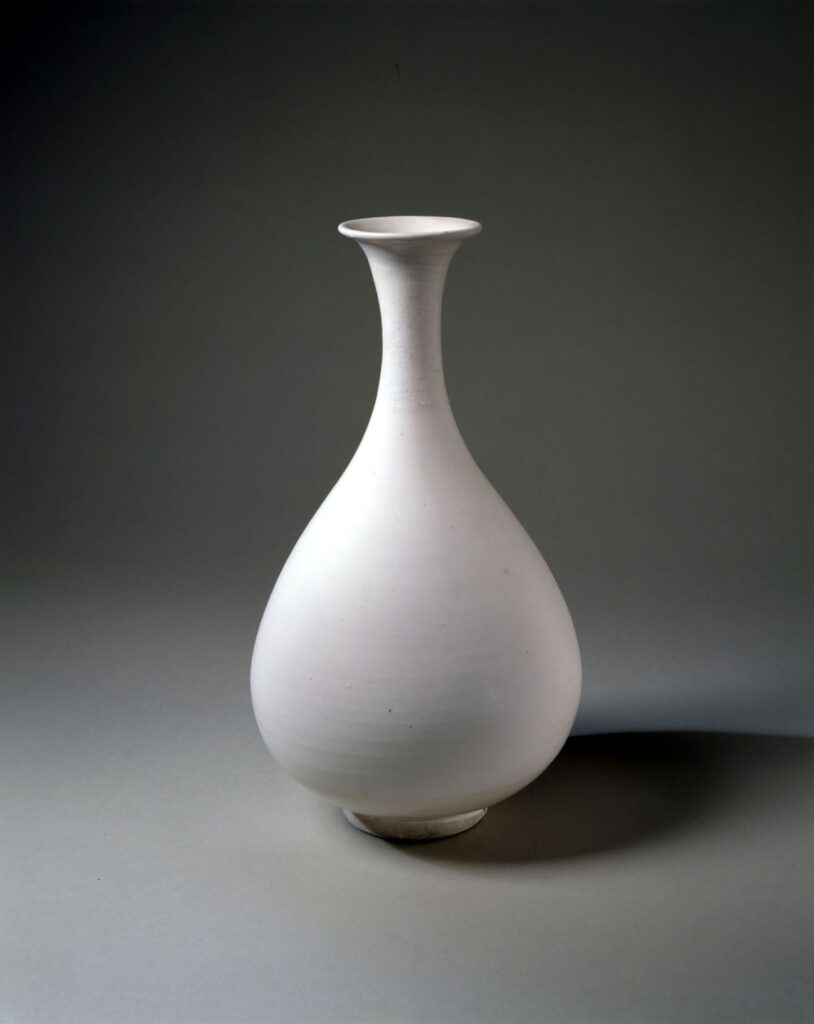
China: A blue-and-white porcelain yuhuchunping vase from the Yuan dynasty (1279-1368 AD):
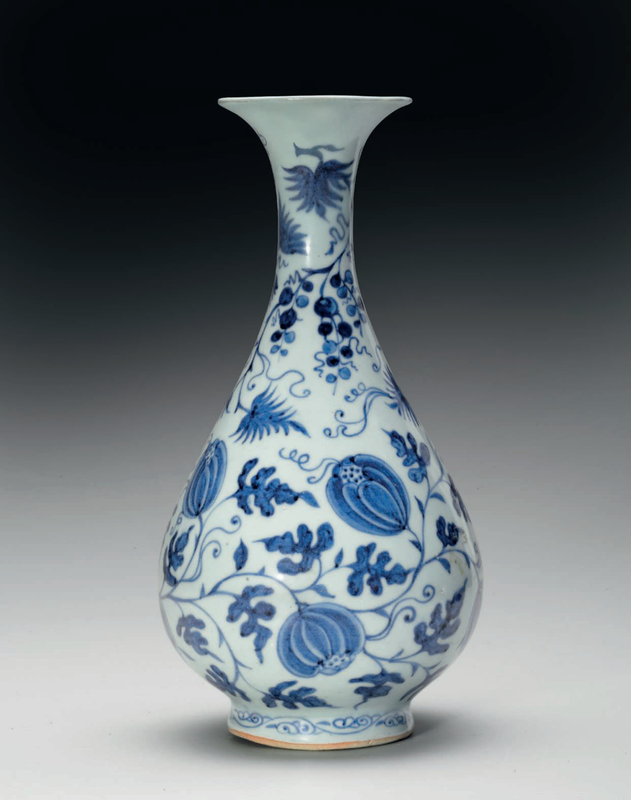
Spread to Korea and Japan
The yuhuchunping vase spread to Korea and Japan during the Goryeo dynasty (918-1392 AD) and the Kamakura period (1185-1333 AD), respectively. It was introduced to Korea by Chinese potters who were invited to the Korean court to teach Korean potters how to make porcelain. The yuhuchunping vase quickly became popular in Korea, and it was produced in a variety of materials, including porcelain, stoneware, and buncheong.
The yuhuchunping vase was introduced to Japan by Korean potters who emigrated to Japan during the Goryeo dynasty. It became popular among the Japanese aristocracy, and it was produced in a variety of materials, including porcelain, stoneware, and raku.
Examples
Some notable examples of yuhuchunping vases include:
Korea: A buncheong yuhuchunping vase from the Joseon Dynasty, 15th – 16th century
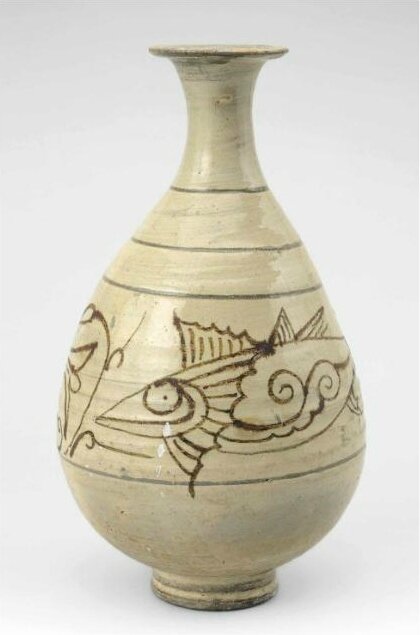
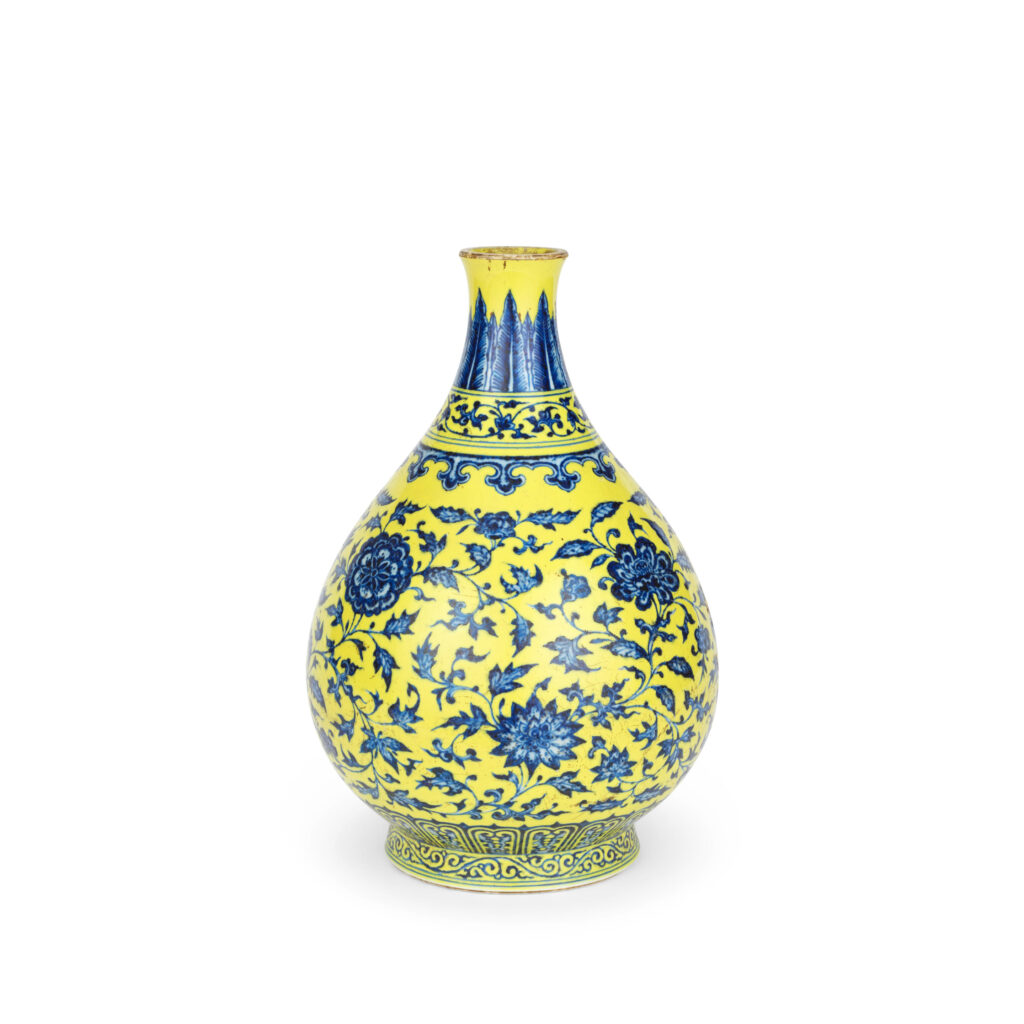
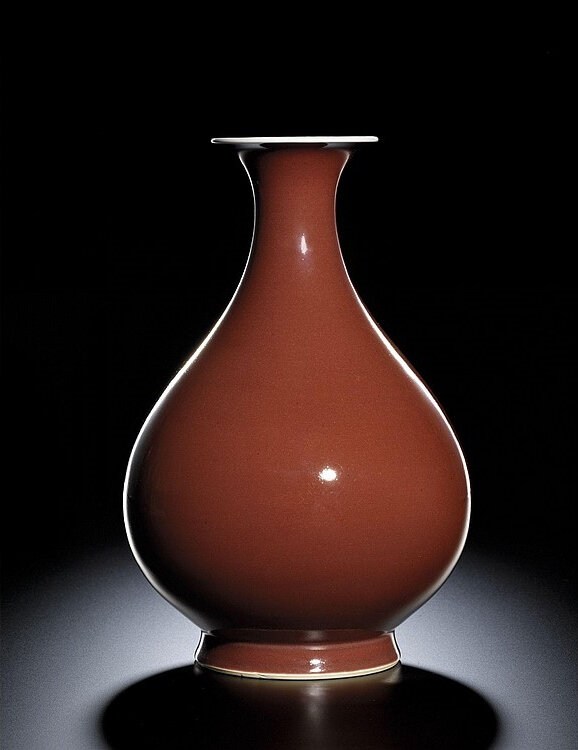
Conclusion
The yuhuchunping vase is a classic East Asian ceramic form that has been produced for centuries. It is characterized by its rounded body, long slender neck, and flared rim. The yuhuchunping vase originated in China during the Tang dynasty, and it spread to Korea and Japan during the Goryeo dynasty and the Kamakura period, respectively. It is still produced today in all three countries.
